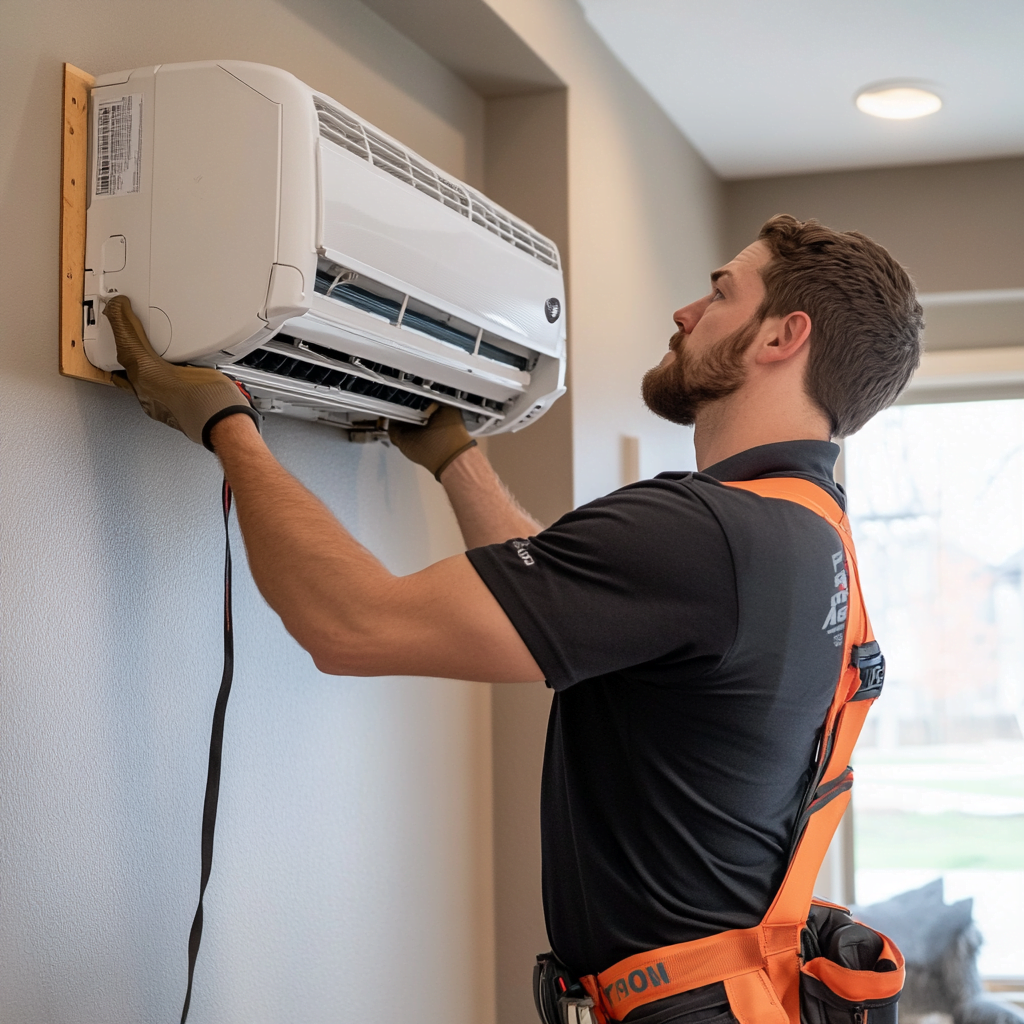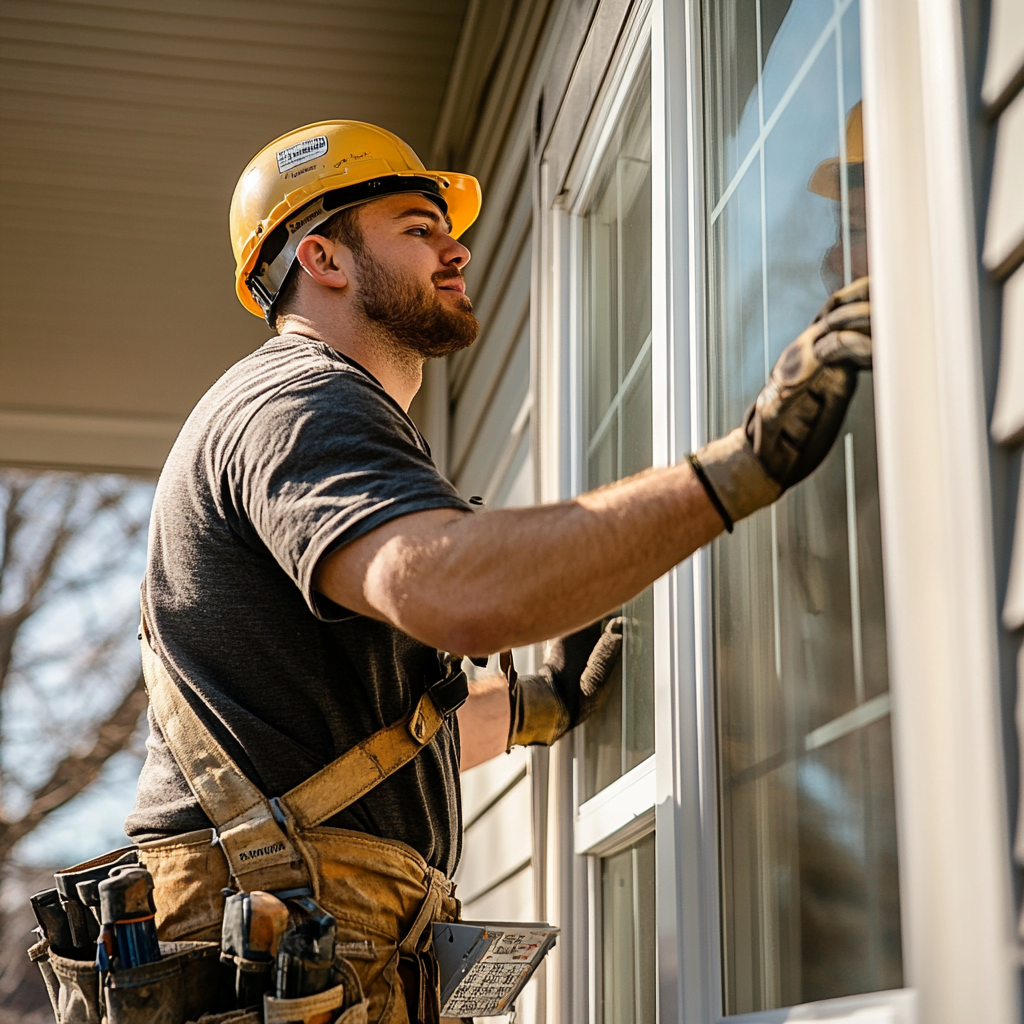Moving to a new home brings excitement and anticipation. However, the process can be physically exhausting and emotionally draining, even if you’re moving within the same city.
This is particularly true during the hot and humid summer months when the heat can add an extra layer of difficulty to the already challenging task of moving. Ensuring that your new home is ready to welcome you can make a substantial difference in easing this transition.
Preparing your home with summer-specific upgrades is essential to create a comfortable and efficient living environment from the moment you arrive. These upgrades not only improve your immediate comfort but also contribute to the long-term value and functionality of your home. In this article, we will discuss eight crucial summer upgrades that can help you achieve a move-in-ready home.
1. Install Air Conditioning

A functioning air conditioning system is essential for comfort during the summer. Without it, the indoor environment can become unbearable. There are various types of air conditioning units to consider, including central air systems, window units, and portable air conditioners. Central air systems are ideal for cooling the entire home, while window units and portable air conditioners are suitable for cooling individual rooms.
Professional installation of air conditioning units is recommended to ensure optimal performance. Experts can assess your home’s cooling needs, recommend the best system, and install it efficiently. This upgrade not only enhances comfort but also improves the overall value of your home.
2. Move in Essential Items First
Coordinating with local movers to transport necessary items before the main move (if possible) can make the transition smoother. Items to prioritize include portable fans, basic kitchen supplies, bedding, and toiletries. Having these essentials on hand will provide immediate comfort and convenience as you settle into your new home.
Portable fans can help circulate air and provide relief from the heat until your air conditioning system is fully operational. Basic kitchen supplies, such as pots, pans, and utensils, will allow you to prepare simple meals without the need to unpack everything at once. Bedding and toiletries ensure you can rest comfortably and maintain personal hygiene from day one.
3. Install Energy-Efficient Windows

Energy-efficient windows play a vital role in reducing heat gain during the summer. They are designed to minimize the amount of heat entering your home, helping to maintain a comfortable indoor temperature. Different types of energy-efficient windows include double-pane, triple-pane, and low-emissivity (low-E) glass windows.
Double-pane and triple-pane windows have multiple layers of glass with insulating gas in between, providing better thermal performance. Low-E glass windows have a special coating that reflects heat while allowing natural light to enter. Professional installation of these windows ensures a proper fit and maximum efficiency.
4. Set Up Outdoor Shade
Creating shaded outdoor spaces is essential for enjoying your yard during the summer. Options for outdoor shade include awnings, pergolas, and shade sails. Awnings are attached to the exterior of your home and provide shade for windows, patios, and decks. Pergolas are freestanding structures with open roofs that can be covered with climbing plants or fabric for additional shade. Shade sails are versatile fabric canopies that can be installed in various configurations to create shaded areas.
Professional installation of outdoor shade structures ensures durability and stability. These shaded areas can significantly reduce the temperature in outdoor living spaces, making them more enjoyable during the hot summer months.
5. Update Landscaping
Updating your landscaping is a key summer upgrade that can help keep your yard cool and inviting. Start by planting shade trees strategically around your home. Trees such as maples, oaks, and elms are excellent choices for providing shade and reducing the heat around your property. These trees can lower the temperature of your yard, making outdoor activities more enjoyable.
Consider incorporating drought-resistant plants that require less water and can thrive in the summer heat. Succulents, lavender, and ornamental grasses are great options. These plants not only add beauty to your landscape but also reduce the need for frequent watering, saving you time and money.
Maintaining a low-maintenance garden is another important aspect. Use mulch around plants to retain moisture and reduce the need for constant watering. Installing a drip irrigation system can also ensure that your plants receive consistent and efficient hydration.
6. Check and Repair Roof
A well-maintained roof is crucial for preventing heat buildup in your home. Inspect your roof for any signs of damage, such as missing shingles, leaks, or cracks. These issues can allow hot air to enter your home, making it harder to keep cool.
Hiring professional roofers to conduct a thorough inspection and make necessary repairs is a wise investment. They can identify and fix any problems, ensuring that your roof is in top condition. Additionally, consider applying a reflective coating to your roof. This can help deflect sunlight and reduce heat absorption, keeping your home cooler.
7. Install Ceiling Fans
Ceiling fans are an effective and energy-efficient way to enhance indoor comfort during the summer. They help circulate air and create a cooling breeze, reducing the need for constant air conditioning.
When choosing ceiling fans, consider models with adjustable speeds and reversible motors. Reversible fans can be set to rotate counterclockwise in the summer, pushing cool air down and creating a wind-chill effect. This helps you feel cooler without lowering the thermostat.
By strategically placing ceiling fans in bedrooms, living areas, and outdoor spaces, you can enjoy a more comfortable environment throughout your home.
8. Improve Bathroom Ventilation
Proper bathroom ventilation is essential for preventing humidity buildup, especially in the summer. Excess moisture can lead to mold and mildew growth, which can cause health issues and damage your home. Upgrading your bathroom ventilation system helps maintain a healthy and comfortable environment.
Options for improving bathroom ventilation include installing exhaust fans and upgrading existing ones. Exhaust fans remove moisture and odors from the air, reducing the risk of mold and mildew. Make sure you choose fans with higher cubic feet per minute (CFM) ratings for larger bathrooms to ensure efficient ventilation.
The Takeaway
Preparing your new home for the summer involves making essential upgrades that enhance comfort, efficiency, and overall livability.
By focusing on these critical summer upgrades, you can ensure your new home is move-in ready and well-prepared to handle the summer heat. These improvements not only enhance your immediate comfort but also add long-term value to your property. Taking the time to plan and implement these upgrades before moving in allows you to settle into your new home smoothly and enjoy a comfortable living environment from day one.